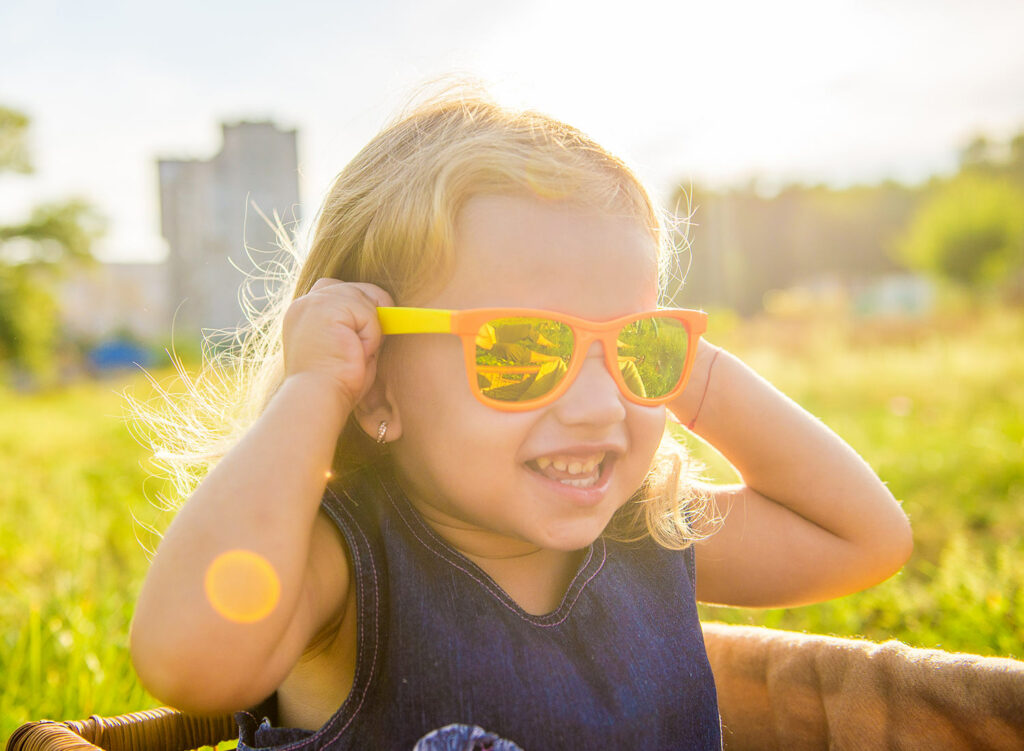There has been a lot of recent discussion in the media about concerns that myopia (short-sightedness) may be increasing among children. Parents are often concerned whether or not they can do something to reduce the chance of their children becoming myopic, or reduce their myopic progression if they already are myopic.
Risk factors for myopia in children include having myopic parents (even after controlling for environmental and demographic differences), and higher socio-economic status. A lot of work has focussed on the impact of near work and time spent indoors. Studies looking at the influence of these factors need to be very carefully designed, because of the potential for confounding bias. People who spend a lot of time outdoors may also be more likely to perform more physical exercise, which needs to be controlled for in study design in case exercise itself is a factor, and may be less likely to spend as much time performing near tasks, so this needs to be controlled for as well.
A number of recent studies have shown that the risk of myopia reduces with increasing time spent outdoors, and increasing light exposure. It also increases with reduced Vitamin D levels, but it is too early to know whether Vitamin D itself plays a role, or whether it is a marker for some other currently unrecognized consequence of light exposure. An interesting recent study in chickens found that intermittent bright light exposure had a greater effect on reducing myopia risk than continuous bright light exposure.
There is much work yet to be done, but so far it seems that putting down the games console and spending a few hours a day running around outside or climbing a tree may be beneficial in ways we parents might not have considered.
Papers:
Lan W, Feldkaemper M, Schaeffel F Intermittent episodes of bright light suppress myopia in the chicken more than continuous bright light. PLoS One. 2014 Oct 31;9(10).
McKnight CM, Sherwin JC, Yazar S, Forward H, Tan AX3, Hewitt AW, Pennell CE, McAllister IL, Young TL, Coroneo MT, Mackey DA. Myopia in young adults is inversely related to an objective marker of ocular sun exposure: the Western Australian Raine cohort study. Am J Ophthalmol. 2014 Nov;158(5):1079-85.
Yazar S, Hewitt AW, Black LJ, McKnight CM, Mountain JA, Sherwin JC, Oddy WH, Coroneo MT, Lucas RM, Mackey DA . Myopia is associated with lower vitamin D status in young adults. Invest Ophthalmol Vis Sci. 2014 Jun 26;55(7):4552-9.
Guggenheim JA, Williams C, Northstone K, Howe LD, Tilling K, St Pourcain B, McMahon G, Lawlor DA. Does vitamin D mediate the protective effects of time outdoors on myopia? Findings from a prospective birth cohort. Invest Ophthalmol Vis Sci. 2014 Nov 18;55(12):8550-8.
Karouta C, Ashby RS. Correlation between light levels and the development of deprivation myopia. Invest Ophthalmol Vis Sci. 2014 Dec 9;56(1):299-309.


